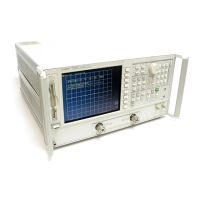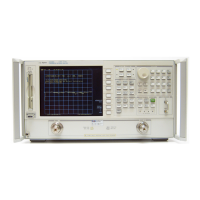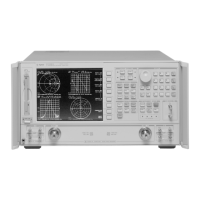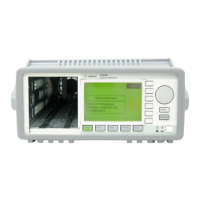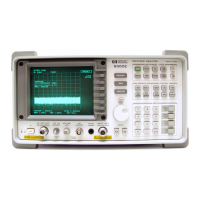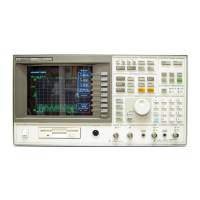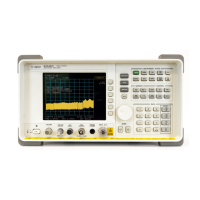5-5
Hardkey/Softkey Reference
Analyzer Functions
goes to the delta marker menu, which is used to read the
difference in values between the active marker and a
reference marker.
turns off the delta marker mode, so that the values
displayed for the active marker are absolute values.
establishes marker 1 as a reference. The active marker
stimulus and response values are then shown relative to
this delta reference. Once marker 1 has been selected as
the delta reference, the softkey label is
underlined in this menu, and the marker menu is
returned to the screen. In the marker menu, the first key
is now labeled . The notation
“∆REF=1” appears at the top right corner of the graticule.
makes marker 2 the delta reference. Active marker
stimulus and response values are then shown relative to
this reference.
makes marker 3 the delta reference.
makes marker 4 the delta reference.
makes marker 5 the delta reference.
sets a user-specified fixed reference marker. The stimulus
and response values of the reference can be set arbitrarily,
and can be anywhere in the display area. Unlike markers
1 to 5, the fixed marker need not be on the trace. The fixed
marker is indicated by a small triangle ∆, and the active
marker stimulus and response values are shown relative
to this point. The notation "∆REF=∆" is displayed at the
top right corner of the graticule.
Pressing this softkey turns on the fixed marker. Its
stimulus and response values can then be changed using
the fixed marker menu, which is accessed with the
softkey described below.
Alternatively, the fixed marker can be set to the current
active marker position, using the softkey in
the marker menu.
expresses the data in inverse S-parameter values, for use
in amplifier and oscillator design.
sets up a two-graticule display with channel 1 and 2 on the
top graticule and channels 3 and 4 in the bottom graticule.
sets up a two-graticule display with channel 1 and 3 in the
top graticule and channels 2 and 4 in the bottom graticule.
selects the 85056A or the 85056D cal kit.
∆
∆
∆
∆
∆
∆
∆
∆
∆
∆
∆
